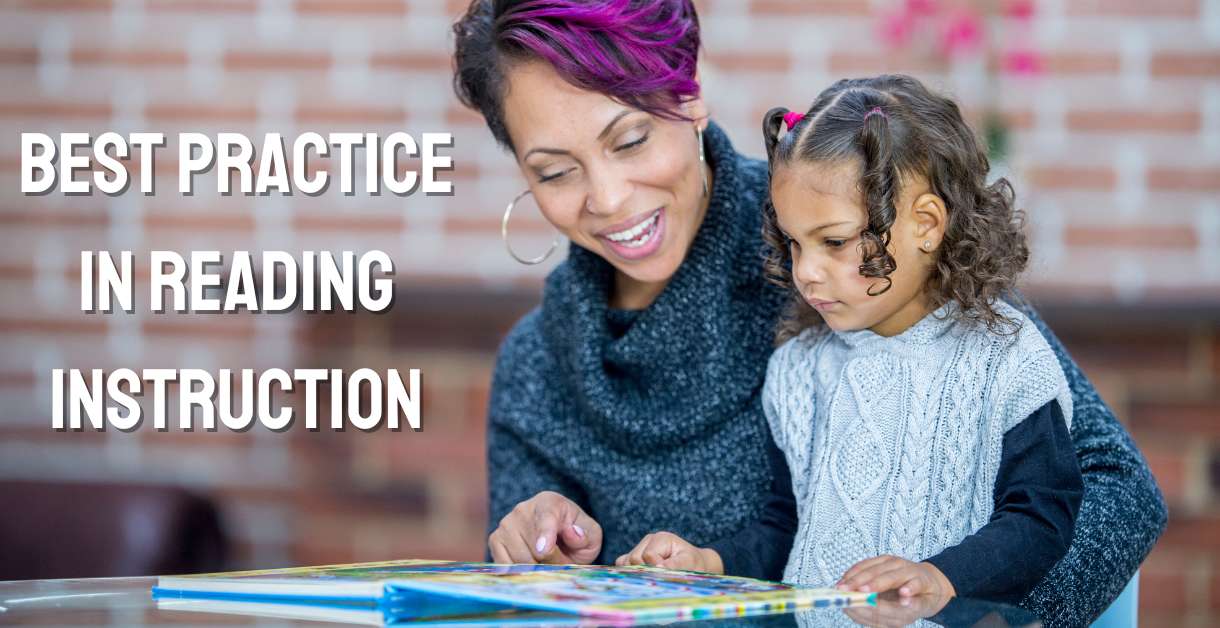There are a lot of conflicting sources that claim to have information and data on what the “best” way is to teach children how to read. The only problem is that many of these sources rely on unproven or even harmful strategies that may cause difficulty for children, especially those with Dyslexia. So, what does the research actually say about what helps children become strong readers?
Phonics
All students benefit from direct instruction in phonics. Younger students in grades K-3 learn to read faster when specific skills are taught in an organized way that allows them to build on what they have already learned. Older students who are struggling with reading are able to overcome reading deficits and increase comprehension skills by learning phonics. Students with dyslexia can “rewire” their brains and overcome the challenges of having this difference in brain functionality. English language learners can master the English language much faster when they understand the patterns of spelling and pronunciation based on phonics.
Multisensory instruction
Multisensory instruction means that learners will use cues from what they see, hear, and feel to learn and remember new things. In reading, this means they will see a word, hear a word, say a word, write a word, spell a word in order to learn a word. Specific techniques in reading instruction were first used in the 1920s by Dr. Samuel Orton. He was influenced by Helen Keller and Grace Fernald. Later, Anna Gillingham and Bessie Stillman wrote a manual that described a specific teaching method that was sequential (teaching step-by-step, from simple concepts to more complex) and multisensory. This teaching method was based on Orton’s work, so it became known as the Orton-Gillingham approach.
Multisensory instruction has been proven to be more effect in the teaching of phonemic awareness, phonics, and comprehension. Students who are taught using multisensory methods that include phonics outperform other students who do not receive this type of instruction.
Vocabulary
Your vocabulary is the number of words you know and understand. The more you read, the larger your vocabulary will be. The larger your vocabulary is, the more you will comprehend what you read. Good decoding skills allow a reader to begin understanding a new word in a text. Some words can be understood through the context of reading. Other words must be directly taught so the reader can master the word within the text. Good reading instruction includes a combination of these two approaches. It is important that parents and teachers continually support vocabulary development by using as many variations of words as possible. For example, instead of always saying “big” substitute more sophisticated synonyms such as gigantic, enormous, huge, etc.
Spelling
Spelling instruction supports reading. Poor spelling is an indication that a reader has not mastered phonemic awareness and phonics. When reading and spelling are taught together, students get practice applying the patterns of the language. We know that integrating spelling and decoding instruction will result in greater gains in fluency and comprehension.
Handwriting
We know that the best reading instruction is multisensory. Handwriting allows the reader to feel the letters and words as they are being written. This reinforces the recognition and recall of individual letters, spelling patterns and words. Good reading instruction integrates handwriting along with spelling.
This is a brief summary of just some of the research that makes up the “science of reading”, but it helps demonstrate why the method used in Reading Horizons At-Home curriculum does such an amazing job at helping children to learn to read! Each of these components is an important part of the program, and together they form a powerful combination that improves the reading ability of all students.
We are thankful for our friends at Reading Horizons At-Home for providing this post.
![]() Reading Horizons At-Home is a dynamic online platform dedicated to empowering learners of all ages with the skills and love for reading. With a team of dedicated educators, researchers, and developers, we offer an engaging and personalized learning experience. Our adaptive approach, backed by research and best practices, focuses on phonics, decoding, and comprehension strategies, ensuring learners develop a solid foundation in reading. From young learners to adolescents and adults, our user-friendly platform and comprehensive curriculum cater to all, fostering growth, confidence, and a lifelong love for reading. Join us at Reading Horizons At-Home and unlock the power of reading for learners of all ages.
Reading Horizons At-Home is a dynamic online platform dedicated to empowering learners of all ages with the skills and love for reading. With a team of dedicated educators, researchers, and developers, we offer an engaging and personalized learning experience. Our adaptive approach, backed by research and best practices, focuses on phonics, decoding, and comprehension strategies, ensuring learners develop a solid foundation in reading. From young learners to adolescents and adults, our user-friendly platform and comprehensive curriculum cater to all, fostering growth, confidence, and a lifelong love for reading. Join us at Reading Horizons At-Home and unlock the power of reading for learners of all ages.
Thinking about adding Reading Horizons At-Home to your homeschool tool-box? Save 35% until 12/16/2023 on your Reading Horizons At-Home subscription at the Homeschool Buyers Club.


